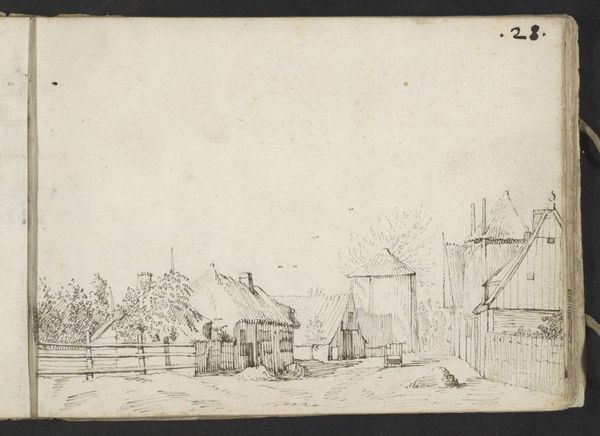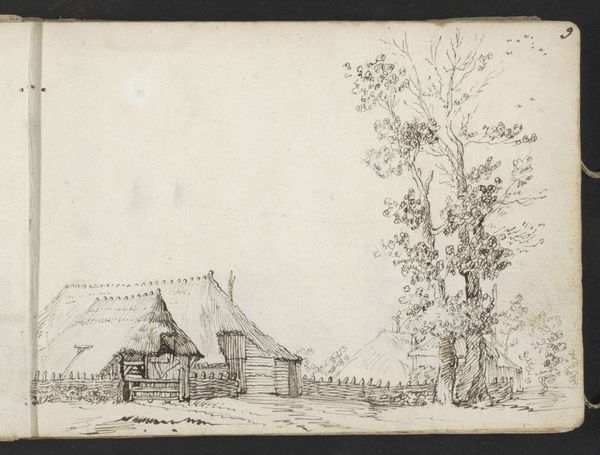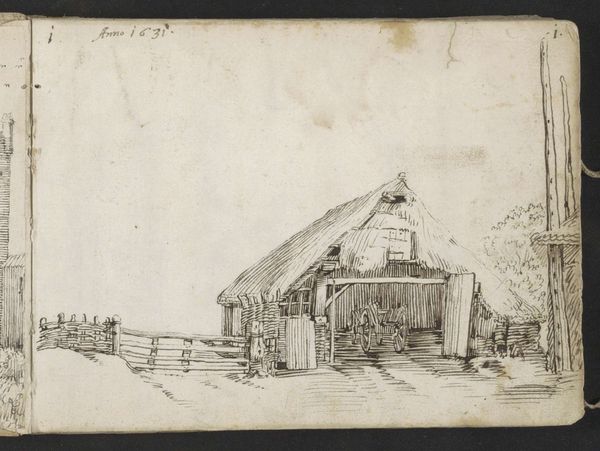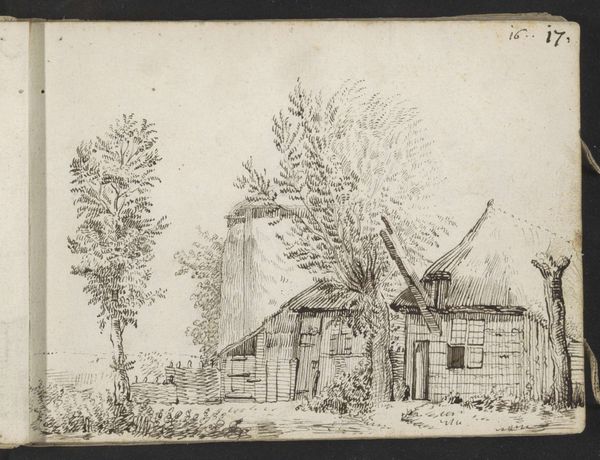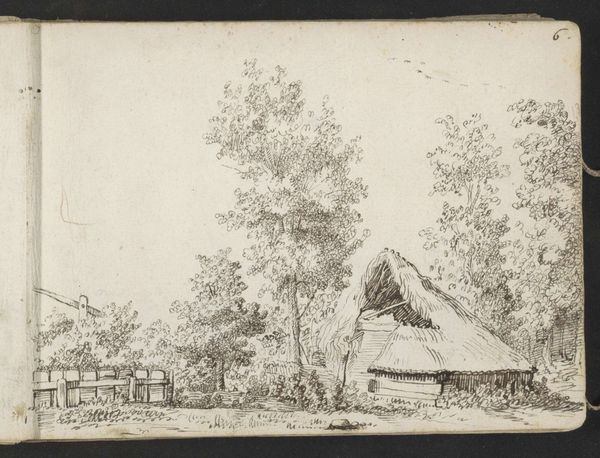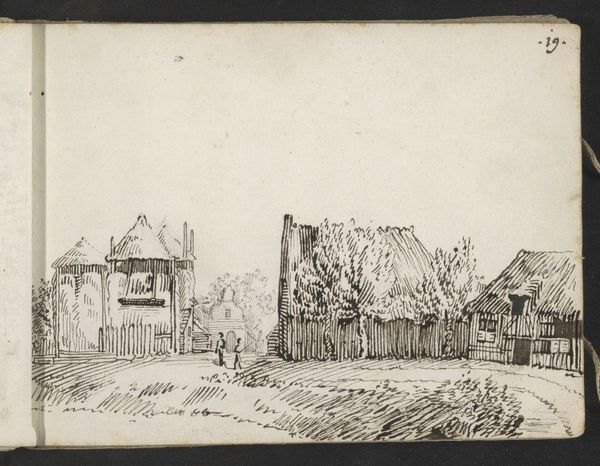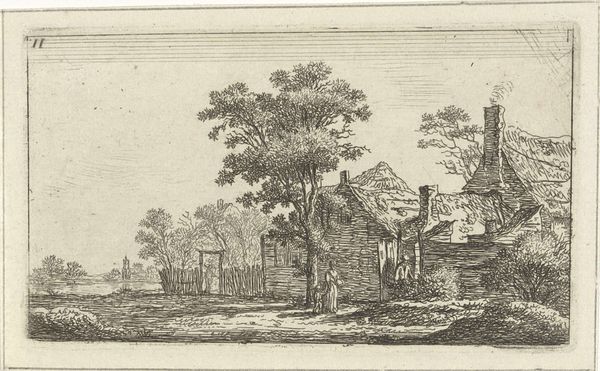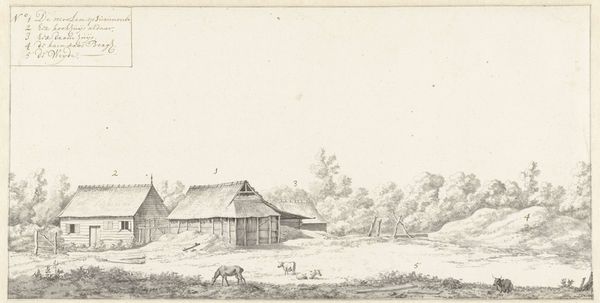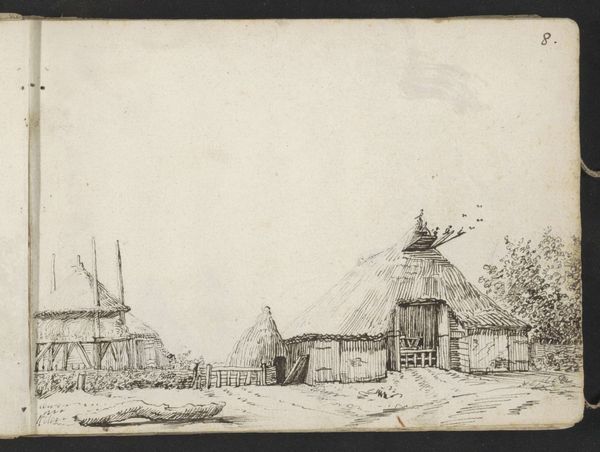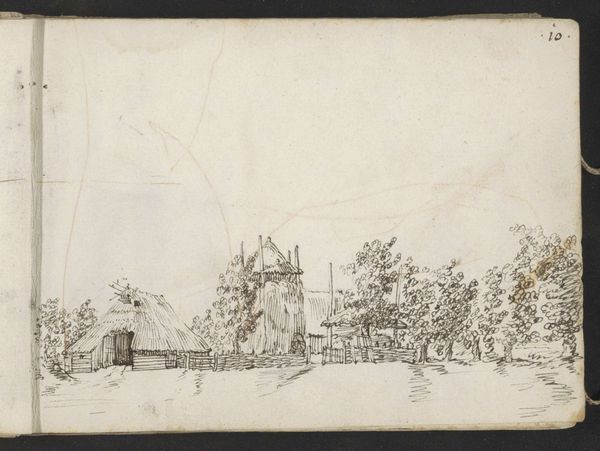
drawing, paper, ink
#
drawing
#
aged paper
#
quirky sketch
#
dutch-golden-age
#
sketch book
#
landscape
#
paper
#
personal sketchbook
#
ink
#
sketchwork
#
pen-ink sketch
#
line
#
pen work
#
sketchbook drawing
#
genre-painting
#
storyboard and sketchbook work
#
sketchbook art
#
realism
Copyright: Rijks Museum: Open Domain
Editor: So, here we have "Twee boerderijen buiten Zwolle," or "Two Farms Outside Zwolle," a pen and ink drawing on paper by Gerard ter Borch, dating back to around 1631-1633. It has a very simple, unassuming quality, like a page torn from a personal sketchbook. What's your take on it? Curator: This drawing offers us a glimpse into the everyday lives of people in the Dutch Golden Age, a period often romanticized but also marked by social hierarchies and rural exploitation. Borch’s choice of subject – humble farmhouses – invites us to consider the lives of those who labored on the land. How does the simplicity of the lines and the focus on rural structures speak to a potential social commentary? Editor: I see what you mean. I initially just saw a quick sketch, but thinking about it within the context of the Golden Age and social dynamics, I wonder if it's a commentary on the relationship between the landowners and laborers. The style, which you might call "realism," maybe is meant to draw our eye to an understated view of the lives of ordinary people. Curator: Exactly! Consider the deliberate rendering of these farmhouses. What aspects of rural life are emphasized, and what's omitted? Is there an element of idealization, or does Borch present a more unvarnished perspective on rural existence? Think about how the style contributes to this potential narrative. How would this image speak differently, say, painted in oil on a large canvas? Editor: That's a great point. An oil painting might feel more 'official' and glamorous, perhaps obscuring the tougher aspects of rural life. The sketch's intimate, almost vulnerable quality humanizes the structures, and by extension, those who inhabit them. I’ve definitely learned to look at what the work leaves out! Curator: Precisely. And in that absence, we find the seeds of a critical dialogue about representation and social justice, even centuries later. These seemingly simple drawings can be powerful tools for understanding the past and questioning the present.
Comments
No comments
Be the first to comment and join the conversation on the ultimate creative platform.
